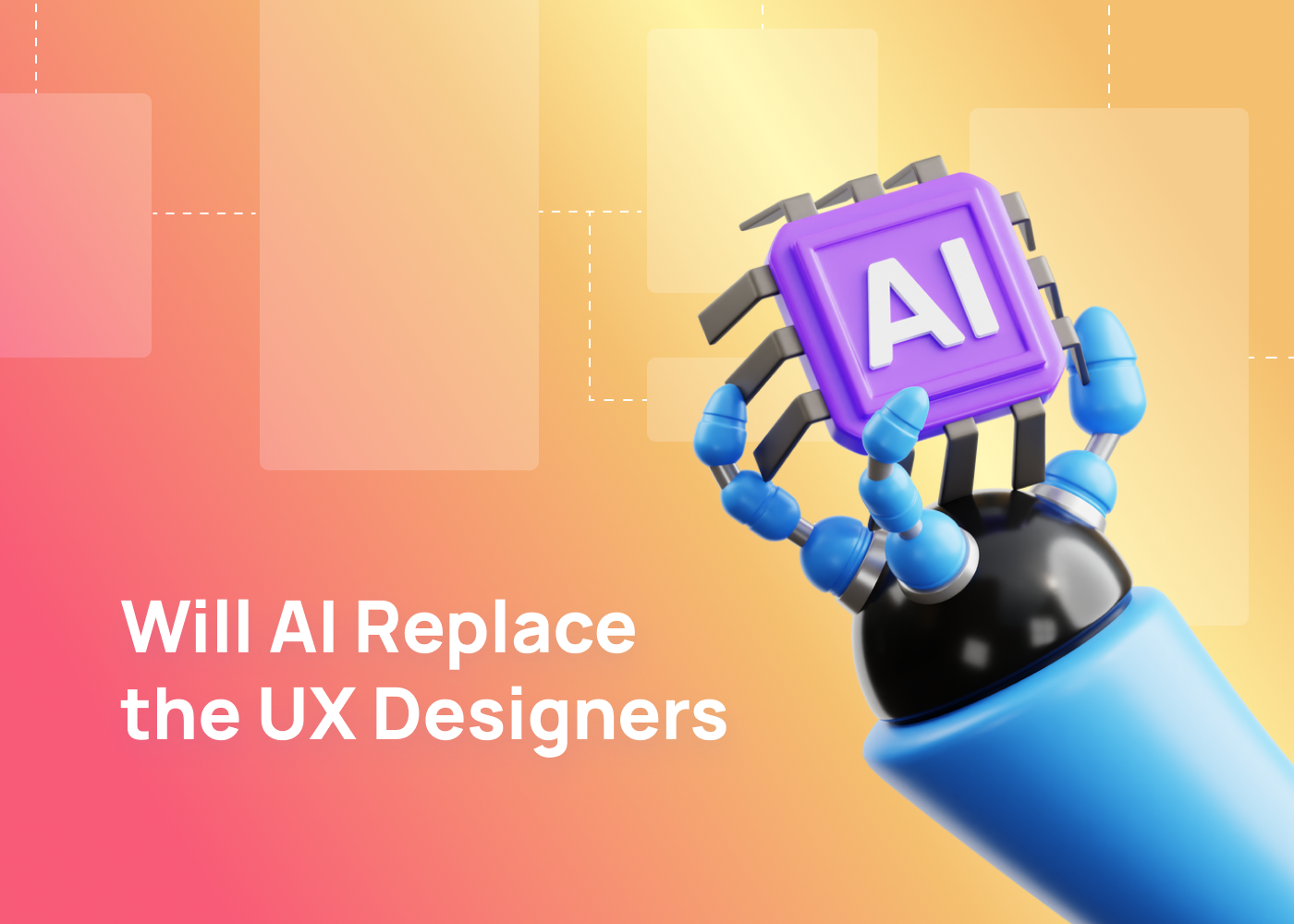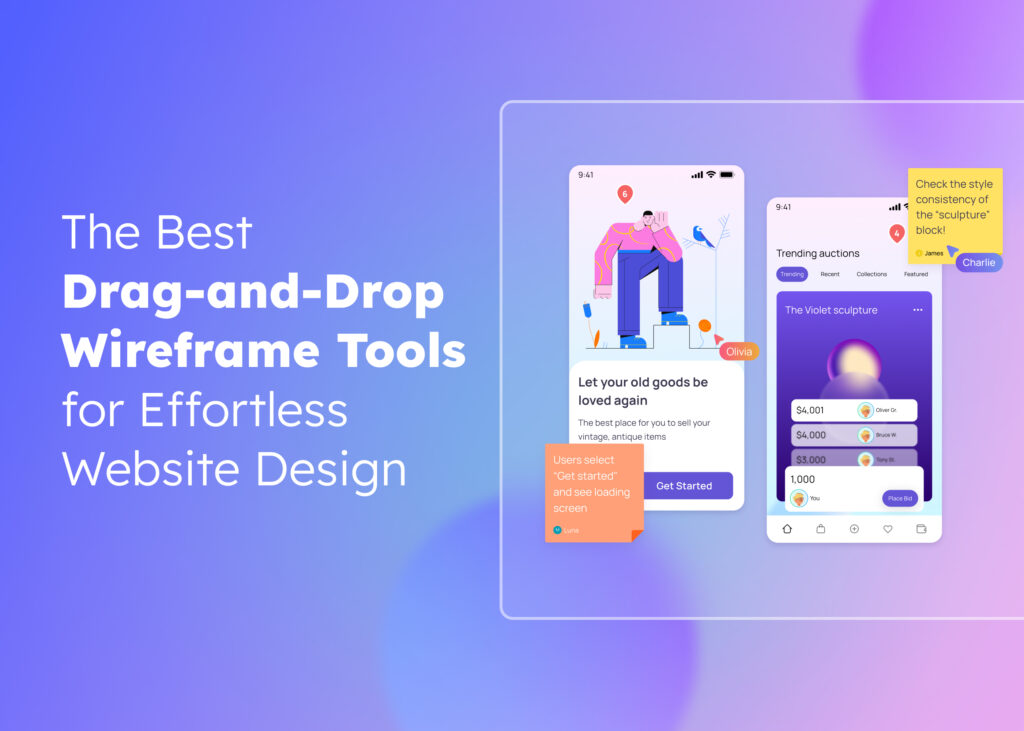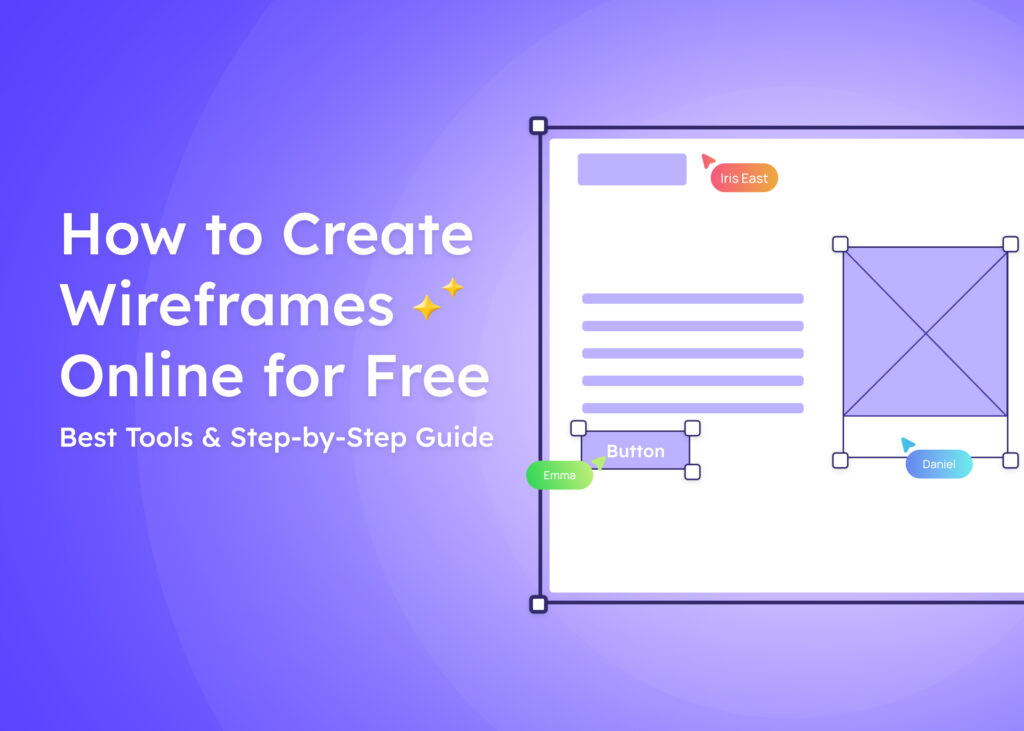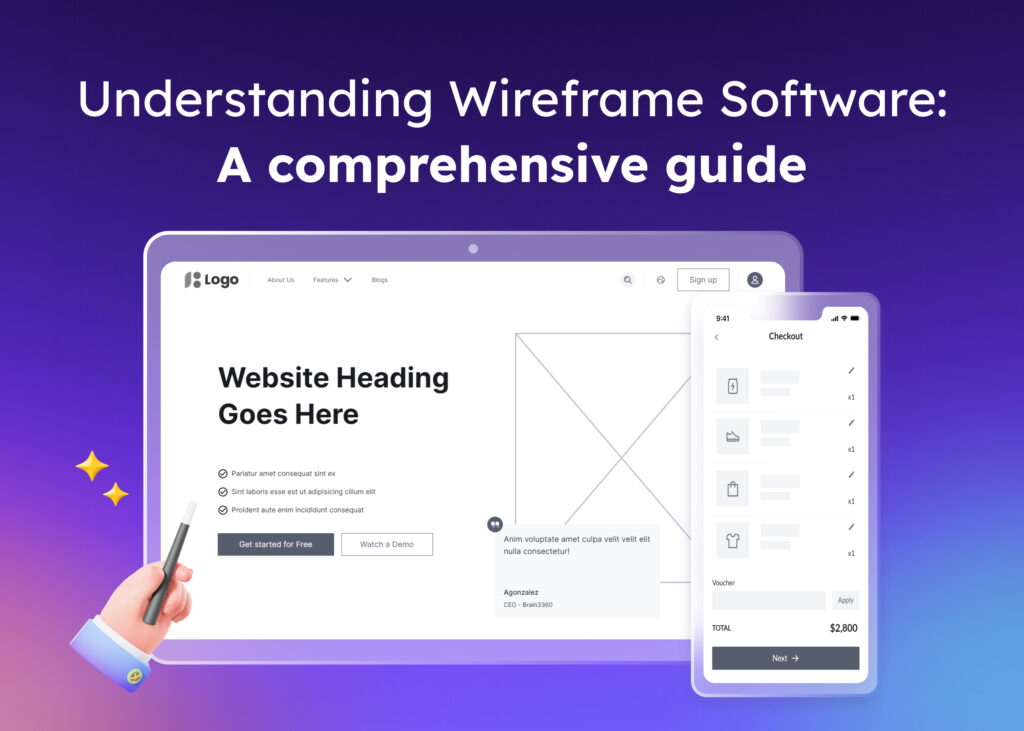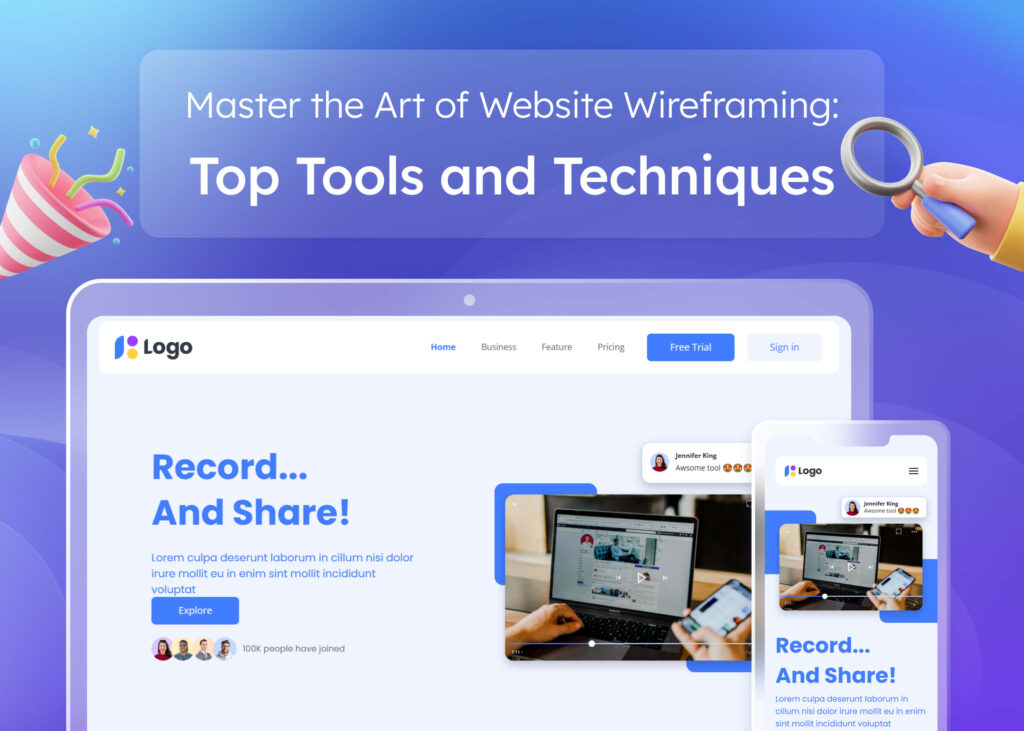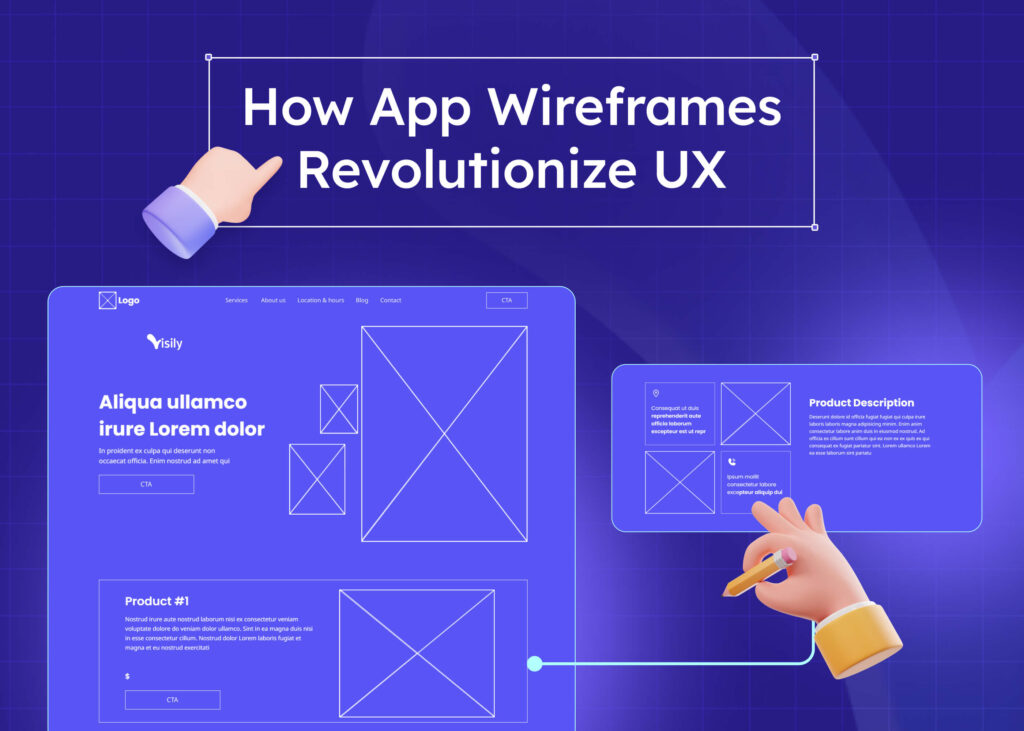AI systems are steadily integrating into the UX design process. A few reasons stand out as to why this integration is noteworthy. AI possesses the ability to crunch massive datasets, providing valuable inputs. With AI systems on the rise, some might wonder if the role of a UX designer is still needed. Can AI truly replace a UX designer?
While AI tools are smart, they cannot replace human designers for several reasons. Every UX designer knows that the heart of great design lies in the UX design process. It’s all about understanding and creating for users. The essence of UX design lies in critical thinking and understanding people.
So, are human designers at risk because of AI? In this blog, we’ll examine the simple reasons AI can’t fully replace UX designers.
Is AI Going to Replace UX Designers?
Right off the bat, let’s be clear: AI is not poised to replace UX designers fully. The unique human perspective and creativity that designers bring to the table are irreplaceable. However, AI’s evolving world presents tools that greatly assist and enhance the design process.
AI tools, for instance, can quickly and efficiently analyze user data, providing valuable insights. These tools can process feedback, handle vast data, and suggest design variations. Such automation can greatly reduce the time designers spend on repetitive tasks, giving them more freedom to focus on the more intricate aspects of design.
Yet, there’s no replacement for the human touch when truly understanding user behavior and needs. UX designers work closely with users. They tap into their human empathy, social skills, and intuitive understanding to craft designs that resonate on a deeply personal level. This level of understanding, rooted in human emotions and experiences, remains challenging for machines.
The UX designer’s role is multifaceted. Beyond aesthetics, they engage with multiple human stakeholders, making decisions rooted in human emotions, and continuously aim to deliver outstanding user experiences. While AI can undoubtedly assist designers, the essence of human-centric jobs remains securely in the hands of humans.
Can AI Replace UX and UI Designers?
While AI in UX design represents a new frontier, the essence of both UX and UI design goes beyond mere algorithms.
For instance, AI design tools are becoming proficient at generating design suggestions based on data. They can whip up numerous design options, optimizing the process. But when it comes to UI design, which often requires a unique blend of aesthetics and functionality, human intuition and understanding are paramount.
UX designers bring a deep-rooted understanding of user needs. They not only rely on data but also on empathy, cultural nuances, and real-world experiences. AI tools may assist in automation and offer efficient solutions, but they can’t truly grasp the subtleties designers understand.
In the realm of UI, innovative solutions often stem from human creativity. While machines can provide multiple variations, the true essence of an engaging user experience is born from a designer’s vision.
While AI offers invaluable tools for both UX and UI design, it doesn’t overshadow human designers’ unique skills and perspectives. They remain essential in crafting user-friendly products that truly resonate.
Will UX Design be Automated?
Artificial intelligence and machine learning have indeed made leaps in automating certain design aspects. They can automate tasks like data collection and preliminary layout suggestions, making the initial phases more streamlined. This automation can be a boon, freeing designers to invest their time in more complex tasks.
Yet, the most human-centric jobs have elements that machines can’t wholly replicate. User research, for example, goes beyond mere data points. It dives into emotions, cultural contexts, and intricate human behaviors. UX designers understand customer behavior in-depth, which helps sculpt genuinely engaging user experiences.
Furthermore, designers generate ideas, brainstorm, and interact with stakeholders. These tasks demand human interaction, creativity, and social skills.
In short, while parts of UX design might be automated, the core elements requiring human empathy, creativity, and understanding are far from being taken over by machines.
AI’s Impact on UX Designers
With the advent of AI in the creative domain, UX designers are witnessing a transformation in how they approach and execute their work. Artificial intelligence is reshaping the landscape, and here’s a glimpse into its impact on UX designers:
- Efficiency Boost: AI can take on mundane, repetitive tasks that designers once grappled with. This includes tasks like resizing images or generating color palettes. By handling these, AI allows designers to focus on core creative processes.
- Design Variations: AI can produce multiple design suggestions in a short time. This means that designers can explore a more comprehensive array of concepts and refine the best ones.
- Data-Driven Decisions: With AI’s prowess in data analysis, UX designers can now create designs backed by solid user data, ensuring their creations align with user preferences.
- Learning Curve: The introduction of AI design tools necessitates that designers adapt and learn to integrate them into their workflow, adding a new dimension to their skill set.
- Collaborative Approach: AI isn’t a solitary tool. It can be viewed as a collaborator, providing real-time feedback and suggestions, making the design more dynamic and interactive.
However, amidst these advancements, the essence of UX design—creativity, intuition, and the human touch—remains paramount. While AI offers many tools and insights, the human mind is at the heart of truly captivating designs. In a way, hand-in-hand, AI and UX designers herald a future where technology and creativity converge.
AI in UX Design – The New Frontier
The fusion of AI and UX design is crafting a new era in the digital landscape. Artificial intelligence is no longer just a buzzword. It’s actively influencing and reshaping the design process, bringing efficiency and innovation. Let’s explore the various ways AI is making waves in UX design:
- Speeding Up the Design Process: One of AI’s transformative abilities is to turn ideas into tangible designs quickly. Designers can now swiftly convert their concepts from screenshots or hand-drawn sketches into editable digital designs within minutes. This saves time and streamlines the iterative design process. Thus, it allows for rapid prototyping and adjustments.
- Personalized User Experiences: Leveraging AI’s data-processing capabilities, designers can tailor experiences to individual user preferences. This personal touch means apps and websites can adapt to users’ needs, creating immersive experiences.
- Predictive Analysis: AI can anticipate user behavior, helping designers create intuitive interfaces. Designers can craft smoother, more intuitive user journeys by understanding potential user actions.
- Chatbots and Virtual Assistants: These AI-driven tools are now a staple in many digital platforms. They guide users, answer queries, and enhance overall user engagement, bridging the brand and its audience.
- Real-time Feedback: With AI tools, designers can receive instantaneous feedback on their designs. This real-time critique helps refine user interfaces quickly, ensuring optimal user-friendly products.
- Prototyping and Testing: AI can generate rapid prototypes based on user data and feedback. This speeds up the design process and ensures the end product is aligned with user expectations.
- Content Curation: AI algorithms can sift through vast content and present users with relevant information tailored to their preferences, enhancing user engagement and satisfaction.
- Accessibility Improvements: AI tools can analyze designs for accessibility issues, ensuring that digital platforms cater to all users, including those with disabilities.
Despite these advancements, the core essence of UX design is understanding and empathy. While AI offers tools to automate and refine, the final touch, the human connection, is irreplaceable. UX designers leverage AI not as a replacement but as a powerful ally, streamlining tasks and bringing data-backed insights.
AI in UX design is a frontier where technology augments human creativity. The complementary relationship ensures user experiences remain engaging, innovative, and human-centric.
Forge Ahead with Visily: Navigating AI in Design
The design world is constantly evolving. The seamless integration of AI tools is leading the way. For modern designers, incorporating these tools isn’t just an option. It’s vital to stay ahead.
Visily is a game-changing tool for UX designers. It unlocks boundless UX possibilities. More than just assisting, AI design fuels your creative journey, ensuring your visions take a concrete, captivating form.
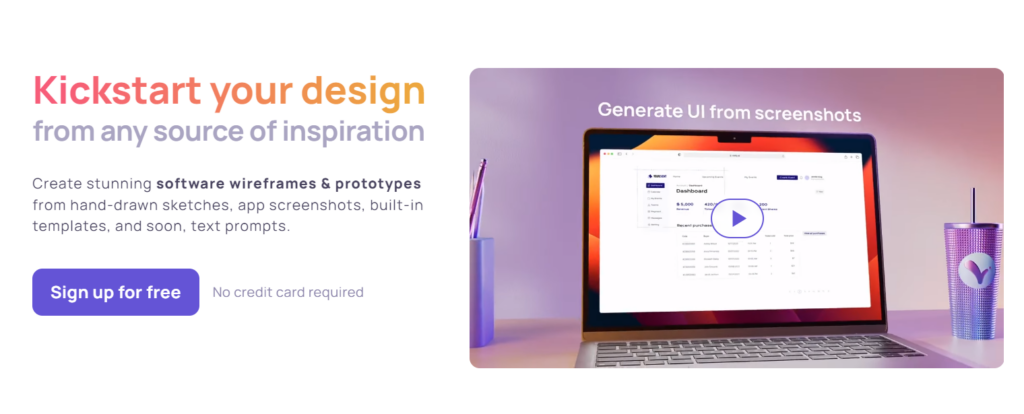
Facing a blank canvas can be daunting. But with Visily’s Screenshot to Design feature, you can bypass this fear. How? Just upload screenshots from any app or website. Like magic, they morph into editable wireframes. One of AI’s transformative abilities is quickly turning ideas into tangible designs. Designers can now swiftly convert their concepts from screenshots or hand-drawn sketches into editable digital designs within minutes. This saves time and streamlines the iterative design process. Thus, it allows for rapid prototyping and adjustments.
But there’s more. With Magic Themes, reinventing your app’s aesthetic becomes effortless. Whether you’re looking to create a theme from keywords, customize a preset theme, or even extract themes from images or URLs – Visily’s got you covered.
Designers, if you’re aiming for innovation, it’s time to try Visily.ai for free. Embrace the fusion of human creativity and AI proficiency. Take the leap now. Start your design journey with Visily.




